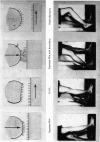Abstract
Mechanisms of lubrication of human synovial joints have been analysed in terms of the operating conditions of the joint, the synovial fluid and articular cartilage. In the hip and knee during a walking cycle the load may rise up to four times body weight. In the knee on dropping one metre the load may go up to 25 time body weight. The elastic modulus of cartilage is similar to that of the synthetic rubber of a car tyre. The cartilage surface is rough and in elderly specimens the centre line average is 2-75 mum. The friction force generated in reciprocating tests shows that both cartilage and synovial fluid are important in lubrication. The viscosity-shear rate relationships of normal synovial fluid show that it is non-Newtonian. Osteoarthrosic fluid is less so and rheumatoid fluid is more nearly Newtonian. Experiments with hip joints in a pendulum machine show that fluid film lubrication obtains at some phases of joint action. Boundary lubrication prevails under certain conditions and has been examined with a reciprocating friction machine. Digestion of hyaluronate does not alter the boundary lubrication, but trypsin digestion does. Surface active substances (lauryl sulphate and cetyl 3-ammonium bromide) give a lubricating ability similar to that of synovial fluid. The effectiveness of the two substances varies with pH.
Full text
PDF
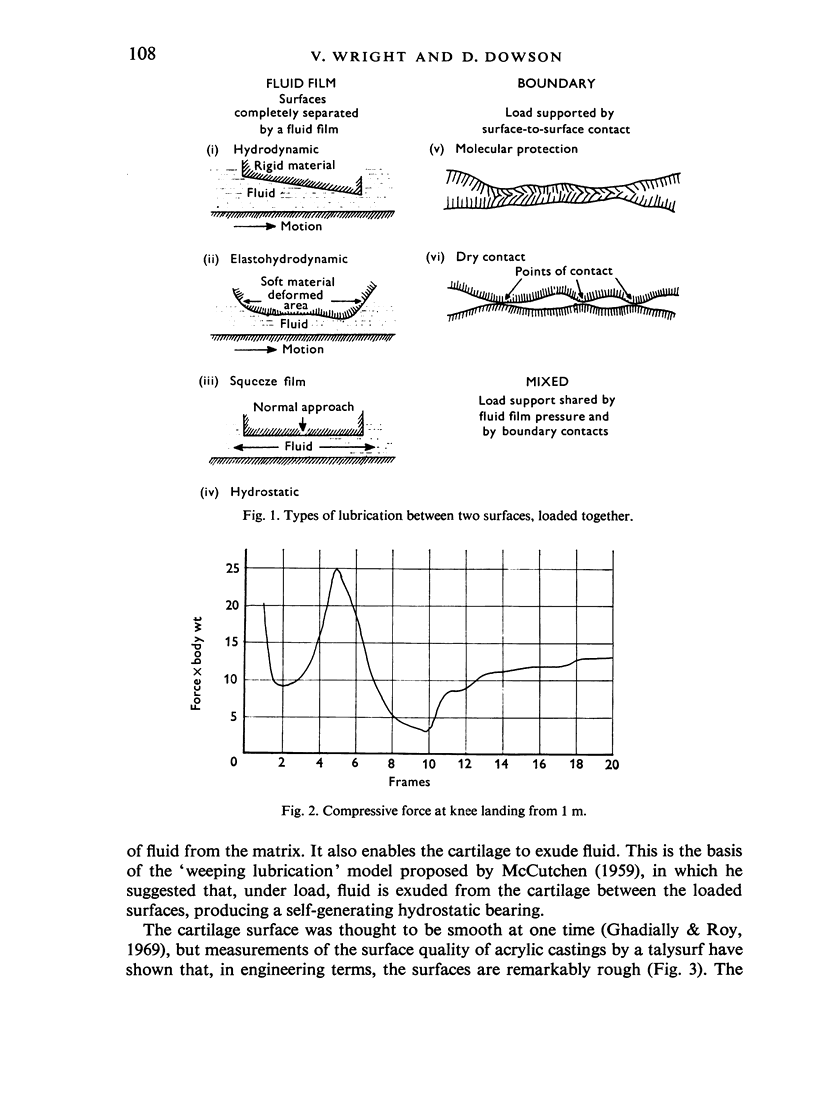
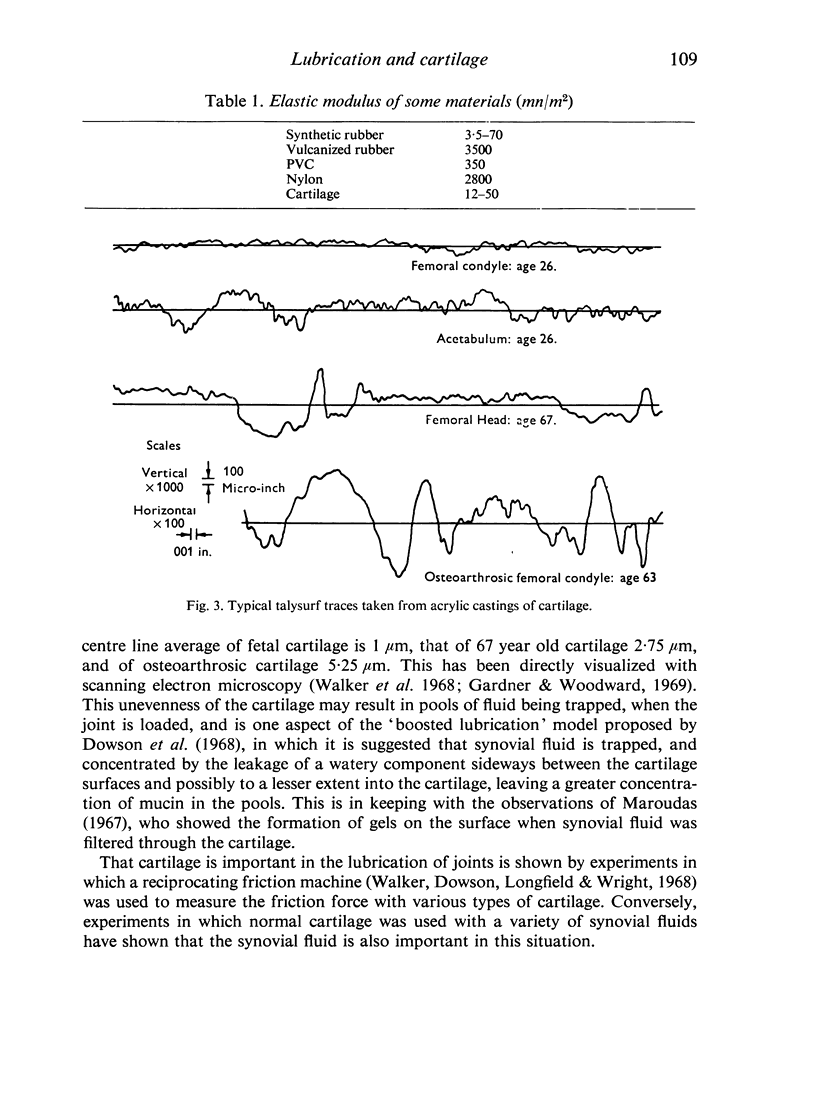
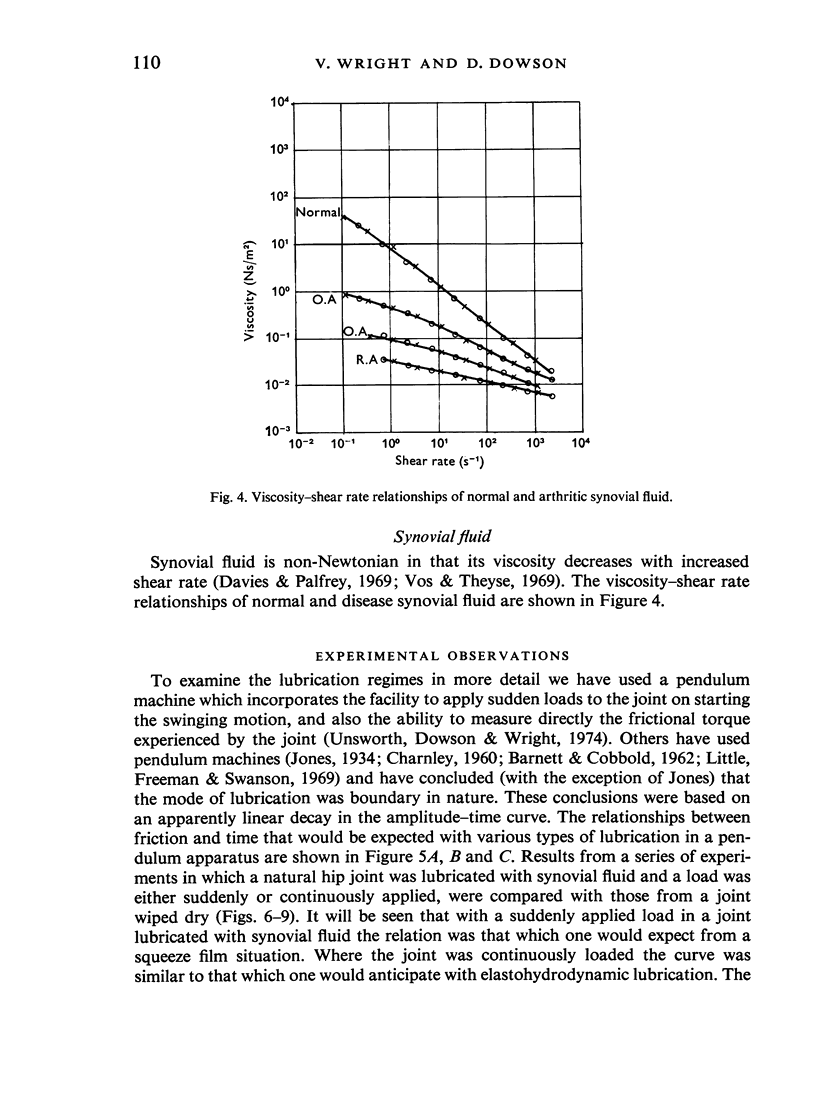
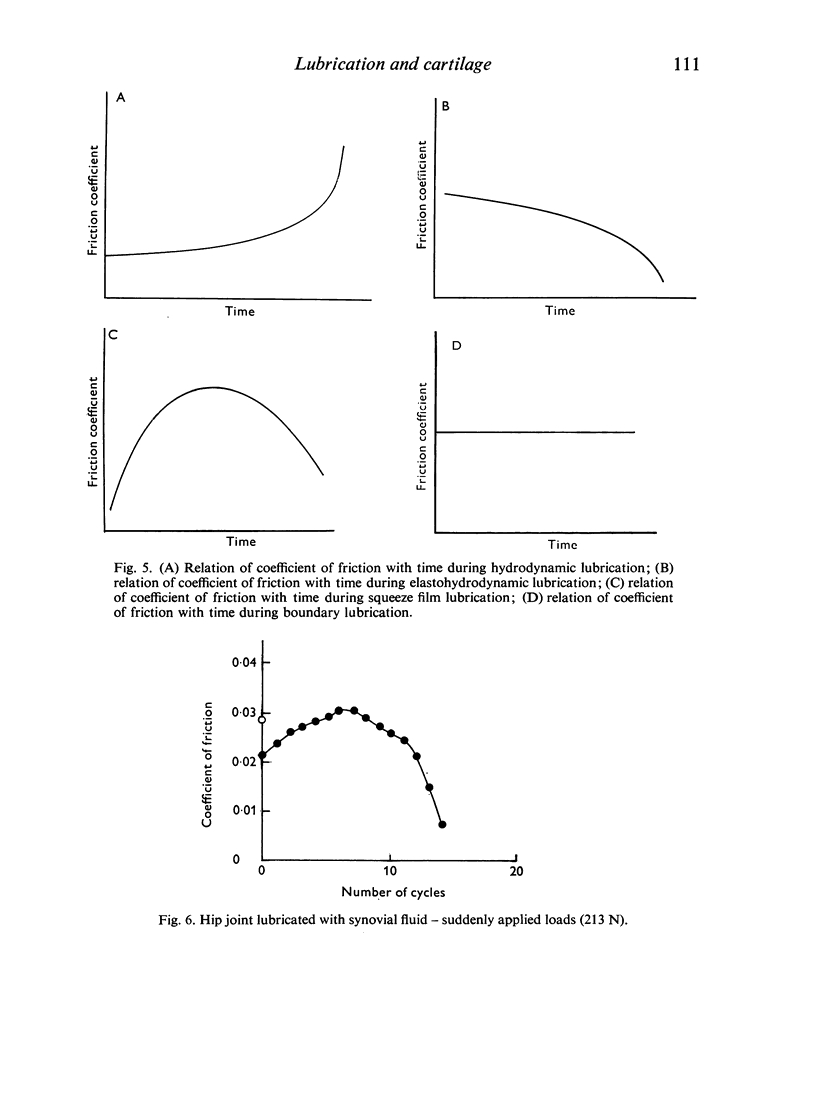
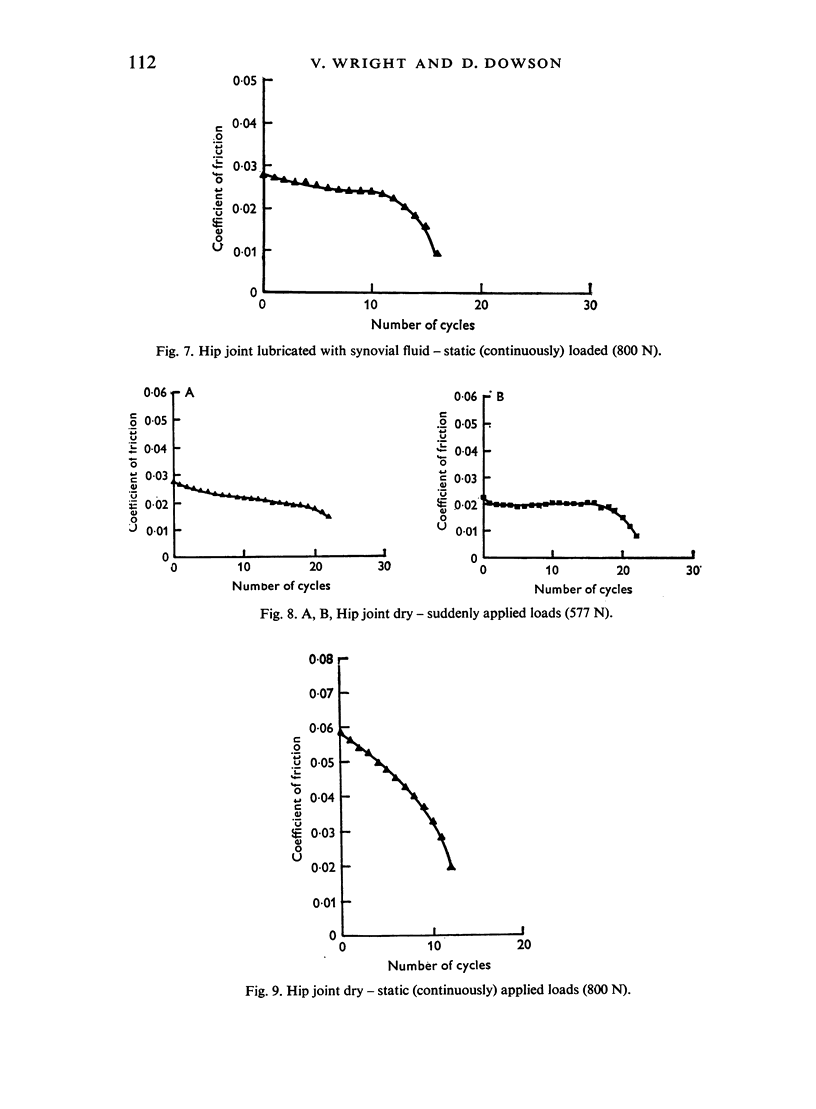
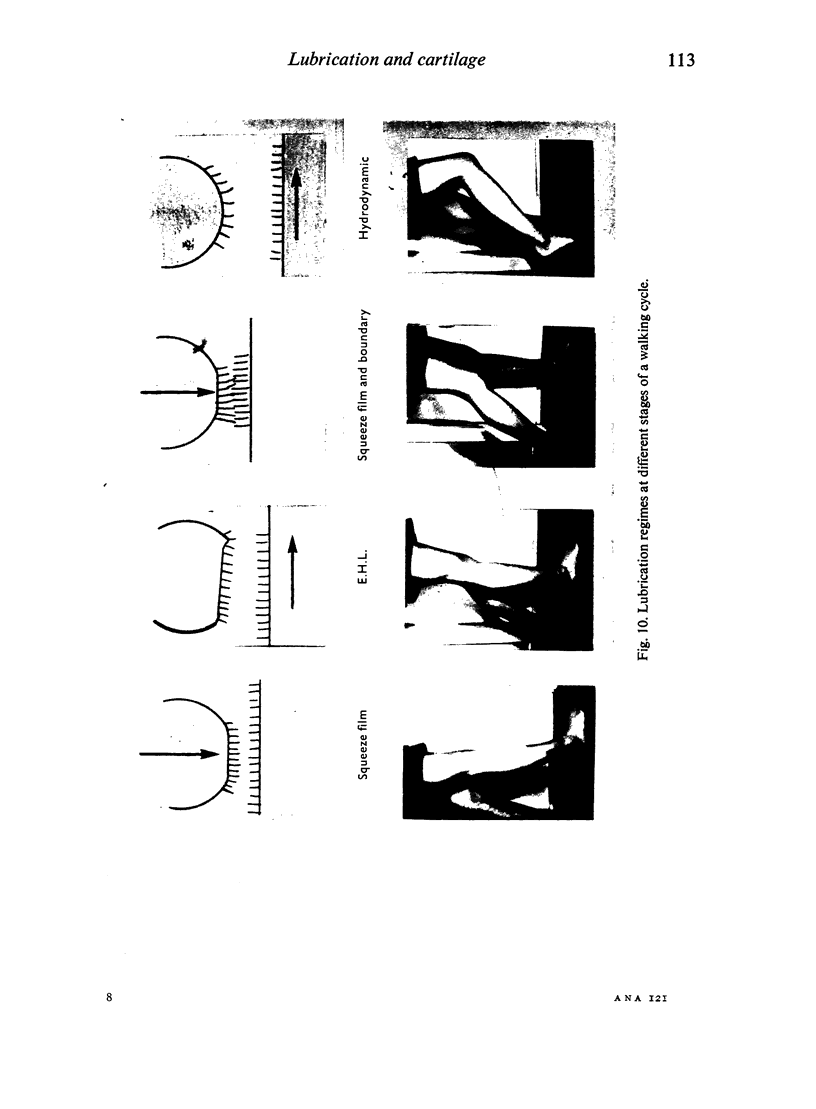

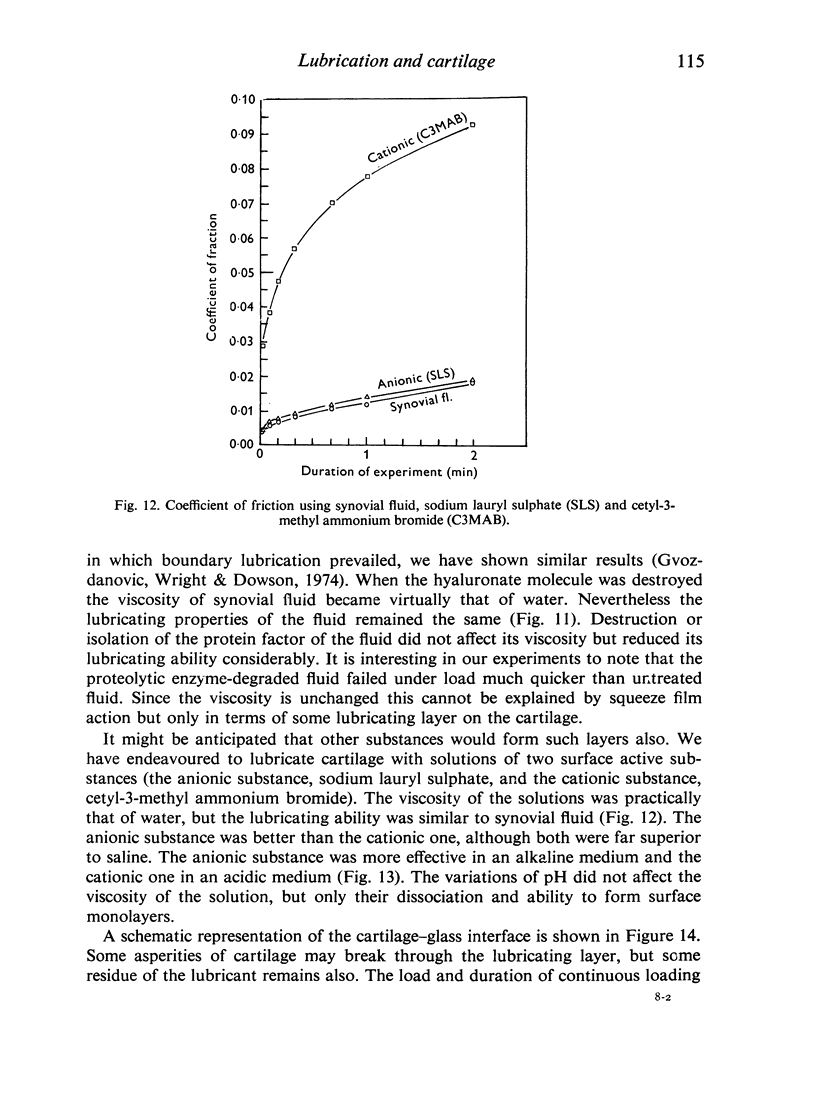
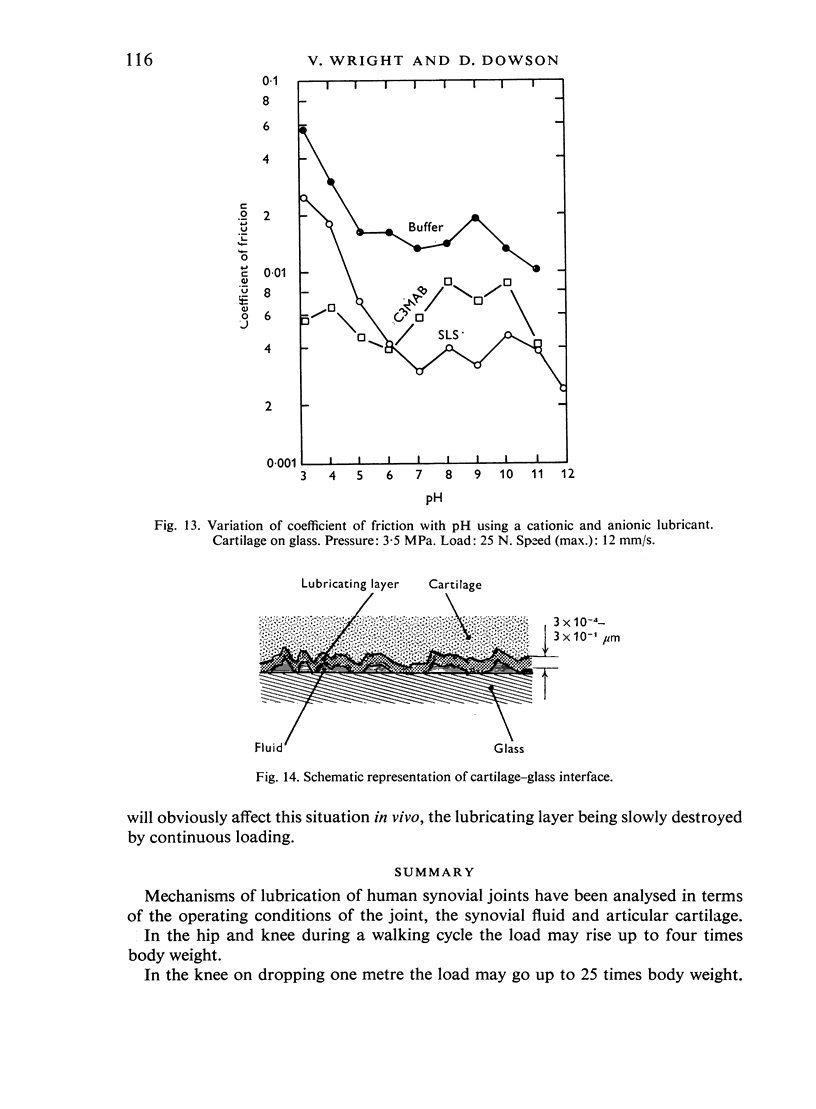
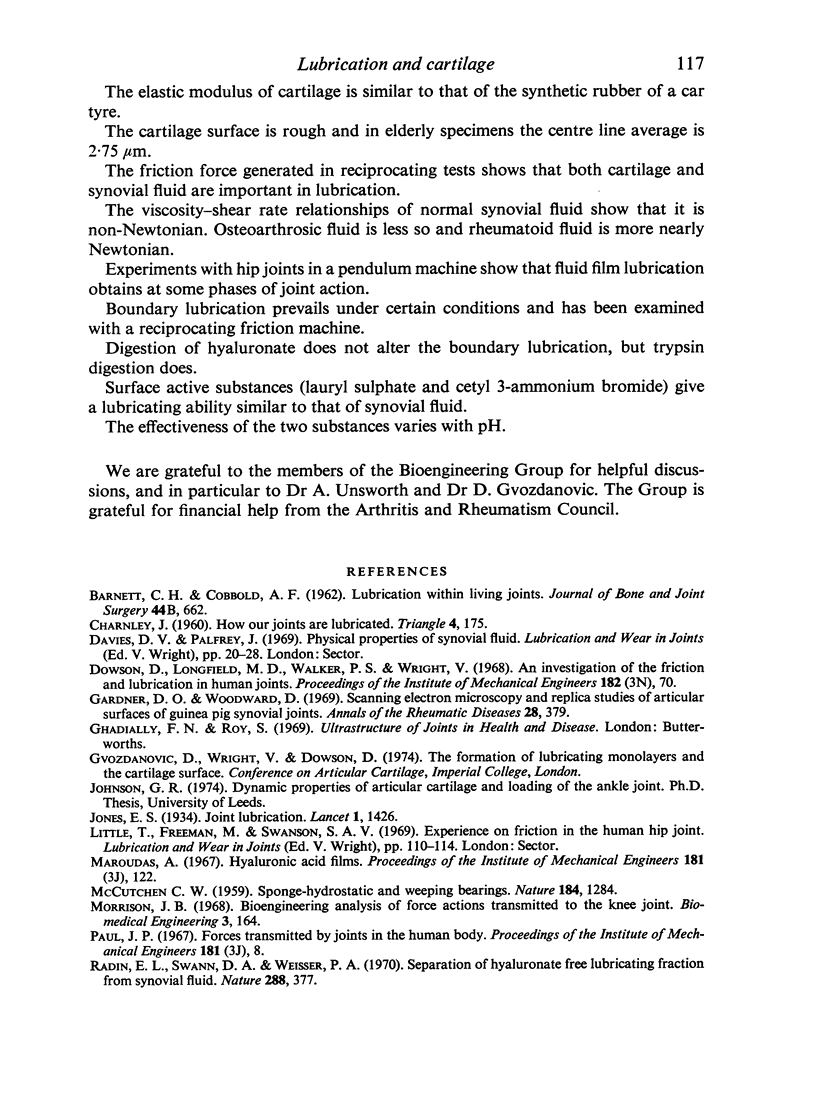
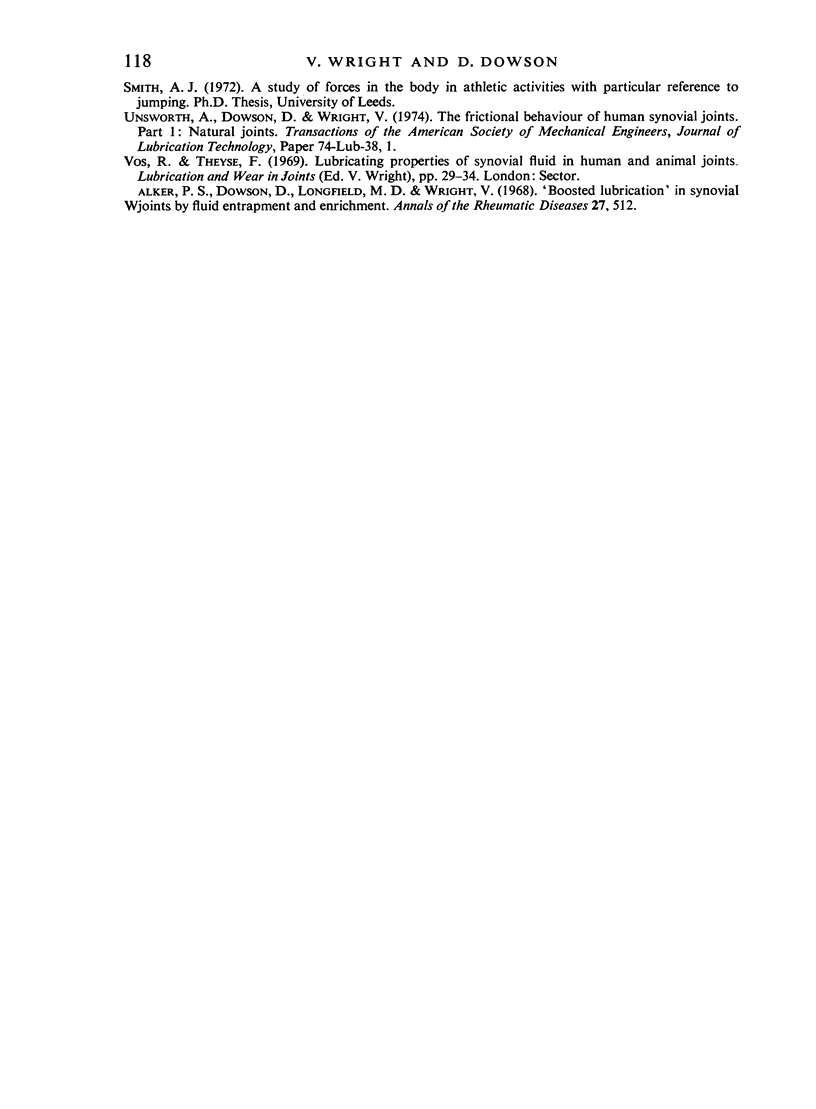
Images in this article
Selected References
These references are in PubMed. This may not be the complete list of references from this article.
- CHARNLEY J. How our joints are lubricated. Triangle. 1960 Apr;4:175–179. [PubMed] [Google Scholar]
- Gardner D. L., Woodward D. Scanning electron microscopy and replica studies of articular surfaces of guinea-pig synovial joints. Ann Rheum Dis. 1969 Jul;28(4):379–391. doi: 10.1136/ard.28.4.379. [DOI] [PMC free article] [PubMed] [Google Scholar]
- Radin E. L., Swann D. A., Weisser P. A. Separation of a hyaluronate-free lubricating fraction from synovial fluid. Nature. 1970 Oct 24;228(5269):377–378. doi: 10.1038/228377a0. [DOI] [PubMed] [Google Scholar]
- Walker P. S., Dowson D., Longfield M. D., Wright V. "Boosted lubrication" in synovial joints by fluid entrapment and enrichment. Ann Rheum Dis. 1968 Nov;27(6):512–520. doi: 10.1136/ard.27.6.512. [DOI] [PMC free article] [PubMed] [Google Scholar]



